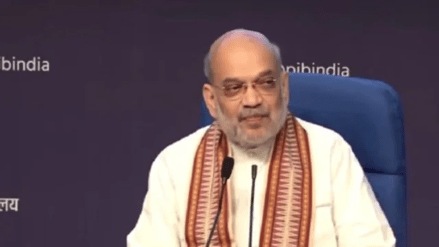On Tuesday, Union home minister Amit Shah said the government will soon conduct the decennial Census that was deferred in 2021 because of the Covid-19 pandemic. However, the fact that he stopped short of promising a caste census, without ruling out its possibility, shows an ambivalence and discomfiture of the political class in addressing the caste question head-on. The Bharatiya Janata Party (BJP), helming a government with coalition partners like the Janata Dal (United) which carried out a caste survey in Bihar last year, should take a leaf out of the Rashtriya Swayamsevak Sangh’s book. The BJP’s ideological parent recently voiced its support while stating that a caste census should not be used for political or electoral purposes. Though the proviso of a non-political/non-electoral end may sound more idealistic than practicable, there is a strong case for enumerating castes.
Besides scheduled castes and scheduled tribes, the Census has not divulged caste population data in independent India. Between 1881, when the first census was begun under British rule, and 1931, censuses tallied all castes. In 2011, a socio-economic caste census was undertaken. But the caste data was not made public because of flaws in enumeration. The Congress has now tried to drum up support among the Opposition to call for a caste census from prior to the general election this year. Last week, Congress leader Rahul Gandhi argued that it would help ascertain the participation of lower castes, backward castes, and Dalits. Indeed, authentic data on such sections will clarify how disproportionate their institutional representation is.
India is nowhere close to achieving castelessness, as the caste system remains the bedrock of our society. Casteless claims are only a preserve of the privileged classes who neither face caste discrimination nor are reliant on sops. When elections are fought on caste arithmetic, it is only fair that accurate data is available to help dissuade politics, and policies, from pandering to dominant groups. It is feared that if a caste census is done, it would trigger demands for greater reservation in public sector jobs, educational institutions or electoral constituencies. But it should lead to a more targeted approach to affirmative action. In recent years, for instance, powerful communities in a few states — such as Patidars in Gujarat, Jats in Haryana, and Marathas in Maharashtra — have agitated seeking reservation or inclusion in castes lower in the rung. Often it results in arbitrary decisions taken by governments as political parties weigh electoral implications over parity. Granular data in this case would shed light on which castes need greater support and which don’t.
In fact, the BJP-led central government has already tapped into the 2011 socio-economic caste census to identify beneficiaries for effectively implementing welfare schemes such as direct benefit transfer and national health insurance. Such a database also needs to be updated. In the absence of fresh data, reservation for other backward classes has tended to be based on the 1931 Census figures. A Census exercise along with caste numbers provides an opportunity to address such anomalies, and ensures that reservation and delivery of welfare measures is fair and supported by evidence. The BJP should therefore take an unequivocal stand and go ahead with a caste census, and make the results public. Such a step not only promises administrative benefits, but it would also disprove criticism of the ruling party as catering mainly to an upper caste base.
